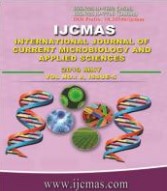


 National Academy of Agricultural Sciences (NAAS)
National Academy of Agricultural Sciences (NAAS)

|
PRINT ISSN : 2319-7692
Online ISSN : 2319-7706 Issues : 12 per year Publisher : Excellent Publishers Email : editorijcmas@gmail.com / submit@ijcmas.com Editor-in-chief: Dr.M.Prakash Index Copernicus ICV 2018: 95.39 NAAS RATING 2020: 5.38 |
Increasing concentrations of volatile organic compounds (VOCs) is a matter of significant concern with respect to the long term impacts on human health and environment. While transport is the greatest contributor of VOCs in ambient air, other sources such as industries and petrol pumps also contribute significantly. The study and analysis of VOCs is important to identify emission sources and impacts. Samples of ambient air were collected and analyzed at three locations in the cities of Mumbai, Nagpur and Pune using an online VOC72M Analyzer. A study was carried out to analyze concentrations of benzene, toluene and m, p- xylene in these cities in order to create a comparative account of diurnal and seasonal variability of these compounds. The results show 1.Annual concentration ranges: 0.35 µg/m3 (minimum) to 24.73 µg/m3 (maximum); 2. Correlation between cities – the minimum concentration was found in Pune while the maximum concentration was found in Nagpur. 3. In general, levels of BTX were higher during summer and winter and were inversely proportional to sunlight.
 |
 |
 |
 |
 |